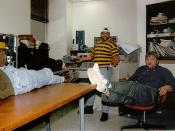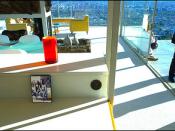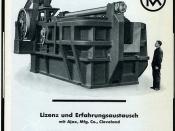Journal Article:
Stahl, S. A. & Kuhn, M. R. (2002). "Making it sound like language: Developing
fluency". The Reading Teacher, 55(6), 582-585. Retrieved June 19, 2005 from the ProQuest database.
This article takes a close look at how developing fluency in the classroom should be completed. Stahl and Kuhn believe that reading development does not occur overnight. Becoming a fluent reader can sometimes be a timely process. There are many aspects that go into being a fluent reader. Some of these aspects are: connections, perceptions, and phonemic awareness. As educators, it is known that some children are better readers than others. If children do not make the transition into being fluent readers, they will have difficulties in constructing the meaning from the text. They will read text without comprehending it. There is an ineffective method called the "round robin" technique. This is where students take turns reading aloud within groups.
Educators have found that this technique is extremely unproductive and unsuccessful. Students who are not reading are either daydreaming or browsing through the text. To develop fluency teacher-directed lessons are needed; this gives the students the opportunity to spend more time in reading connected text.
For readers who are not fluent, this text provides different approaches that may lead to better comprehension. The National Reading Panel found sixteen studies that fit their requirements. They found that "repeated oral reading procedure that's include guidance from teachers, peers or parents had a significant impact on word recognition, fluency, and comprehension across a variety of grade levels." Stahl and Kuhn also examined repeated reading and assisted reading. Looking at both of these techniques they found them to have various differences. They came to the conclusion that assisted reading was more successful. As a teacher models the reading, the students seem to...


